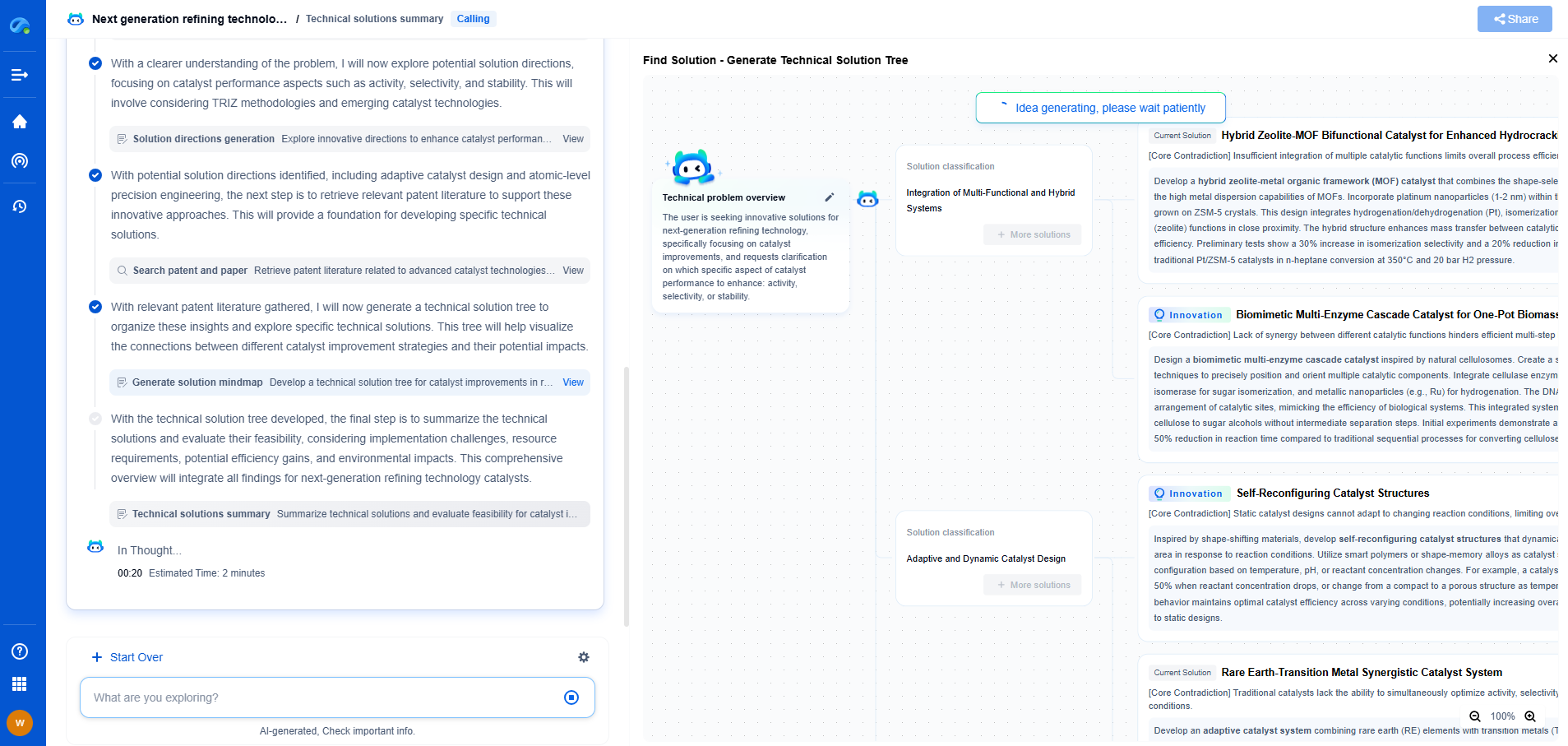How IETF QUIC (RFC 9000) Reinvents Transport Protocols
JUL 14, 2025 |
In the ever-evolving landscape of internet technologies, the IETF QUIC (RFC 9000) stands out as a groundbreaking innovation that redefines how transport protocols operate. QUIC, which stands for "Quick UDP Internet Connections," is a next-generation transport layer network protocol primarily developed by Google and standardized by the Internet Engineering Task Force (IETF). Its goal is to address the shortcomings of the traditional TCP protocol and enhance the web experience by providing faster and more secure connections.
Understanding the Limitations of TCP
Before we delve into the specifics of QUIC, it's important to understand the limitations of the Transmission Control Protocol (TCP), which has been the backbone of internet communication for decades. TCP, while reliable, suffers from several issues that impact performance. Its three-way handshake process introduces latency, especially during connection establishment. Moreover, TCP is prone to head-of-line blocking, where the delivery of packets is delayed due to a single packet loss, impacting the overall user experience.
QUIC's Innovative Approach
QUIC takes a fundamentally different approach by building on top of the User Datagram Protocol (UDP), which allows it to circumvent many limitations of TCP. By doing so, QUIC reduces connection establishment latency with its 0-RTT (Zero Round Trip Time) feature, allowing data to be sent immediately without waiting for the handshake to complete. This significantly speeds up the connection process, which is especially beneficial for mobile users and those with high-latency networks.
Enhanced Security and Privacy
Security is another area where QUIC excels. Unlike TCP, which relies on TLS for encryption at the application layer, QUIC integrates encryption directly into the protocol, providing robust security from the outset. This built-in encryption not only ensures data integrity and confidentiality but also simplifies the security model, making it easier to implement and manage. Moreover, QUIC's use of forward secrecy guarantees that session keys cannot be compromised even if the server's long-term keys are exposed in the future.
Multiplexing and Improved Resilience
One of the standout features of QUIC is its ability to handle multiplexing efficiently. By allowing multiple streams of data to be transmitted independently over a single connection, QUIC eliminates the head-of-line blocking issue prevalent in TCP. This ensures that packet loss in one stream does not affect others, improving overall network performance and user experience.
Moreover, QUIC is designed with resilience in mind. Its connection migration capability allows a session to survive changes in network paths, such as switching from Wi-Fi to cellular data. This feature is particularly useful for mobile users who frequently transition between different networks.
Adoption and Impact on the Web
The adoption of QUIC has been swift, driven by the growing demand for faster and more reliable internet connections. Major web services, including Google and Facebook, have already implemented QUIC to enhance their user experience. Its introduction is expected to drive significant changes in how web applications are developed and deployed, prioritizing efficiency and security.
Challenges and Future Prospects
Despite its advantages, QUIC is not without challenges. The reliance on UDP can pose issues with middleboxes, such as firewalls and routers, that are not designed to handle QUIC traffic. Additionally, as a relatively new protocol, there is a learning curve associated with its implementation and optimization.
Looking forward, the future of QUIC is promising. As more organizations adopt the protocol and contribute to its development, we can expect further improvements in its performance and compatibility. The transition to QUIC could also inspire the development of new applications and services that leverage its unique features.
Conclusion
IETF QUIC (RFC 9000) represents a significant step forward in the evolution of transport protocols. By addressing the limitations of TCP and integrating advanced features for speed, security, and reliability, QUIC is poised to revolutionize the way data is transmitted across the internet. As the digital landscape continues to evolve, QUIC is set to play a pivotal role in shaping the future of web communication, offering a faster, safer, and more resilient internet experience for users worldwide.
From 5G NR to SDN and quantum-safe encryption, the digital communication landscape is evolving faster than ever. For R&D teams and IP professionals, tracking protocol shifts, understanding standards like 3GPP and IEEE 802, and monitoring the global patent race are now mission-critical.
Patsnap Eureka, our intelligent AI assistant built for R&D professionals in high-tech sectors, empowers you with real-time expert-level analysis, technology roadmap exploration, and strategic mapping of core patents—all within a seamless, user-friendly interface.
📡 Experience Patsnap Eureka today and unlock next-gen insights into digital communication infrastructure, before your competitors do.
- R&D
- Intellectual Property
- Life Sciences
- Materials
- Tech Scout
- Unparalleled Data Quality
- Higher Quality Content
- 60% Fewer Hallucinations
Browse by: Latest US Patents, China's latest patents, Technical Efficacy Thesaurus, Application Domain, Technology Topic, Popular Technical Reports.
© 2025 PatSnap. All rights reserved.Legal|Privacy policy|Modern Slavery Act Transparency Statement|Sitemap|About US| Contact US: help@patsnap.com

